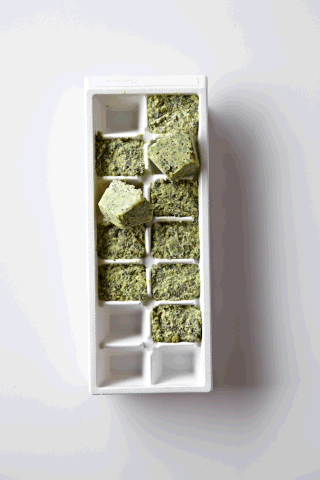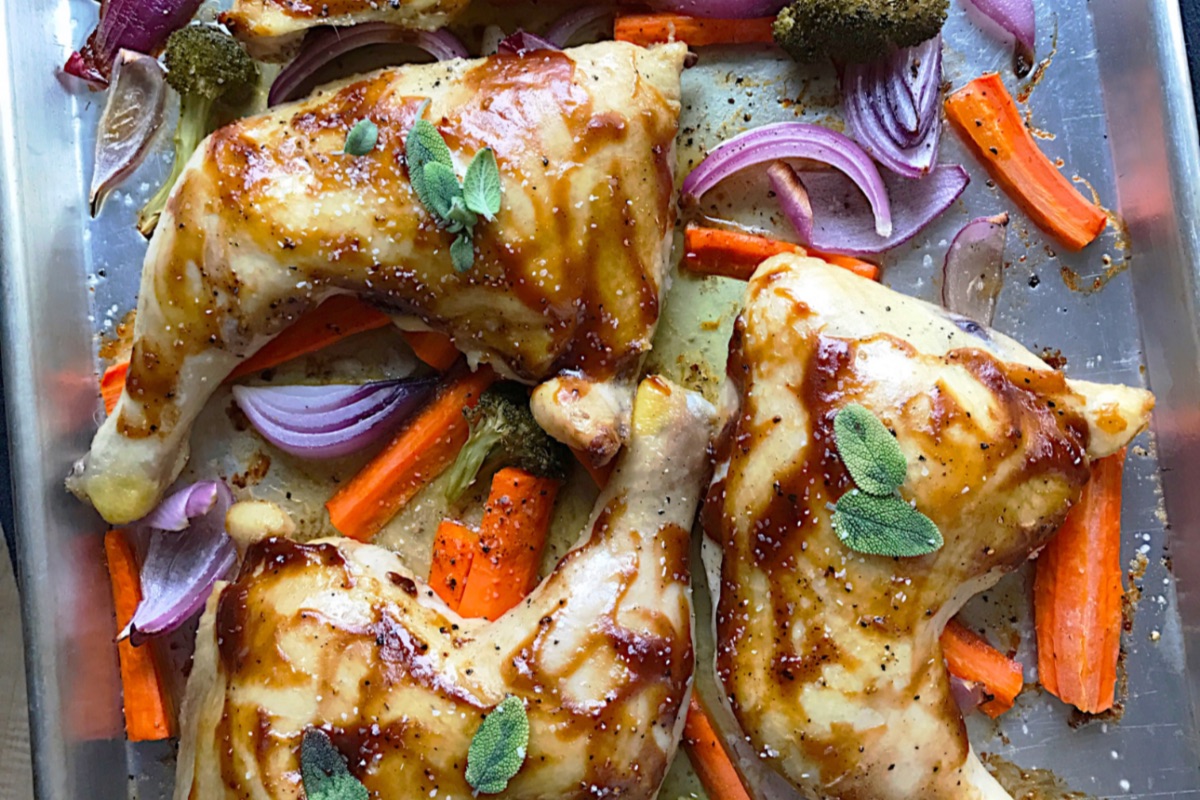Psst … basil is not required!
You see it sold in jars in the pasta sauce aisle and have probably spotted it on restaurant menus starring in everything from grain bowls to sandwiches to steak entrées. But what is pesto, exactly, and how many liberties can you take before it turns into sauce that should go by another name?
We bet you might be surprised by how much wiggle room you have with your pesto recipes to make them your own – and use up any fresh herbs you have in surplus. Since that’s the case, you might be feeling more inspired than ever to make big batches on repeat. To help you maximize the lifespan of your flavor-packed sauce, we’re sharing how to store pesto and dishing up some of our favorite ideas for how to use pesto (on pasta and so much more).
What Is Pesto?
Translated from Italian, “pesto” means “to pound.” Technically, anything you smash in a mortar and pestle could qualify as pesto. However, we like to get a bit more specific for two reasons:
- Most modern pesto recipes are made in a food processor or blender.
- A wide variety of other cultures mash ingredients in a mortar and pestle (aka molcajete); chimichurri, spice blends, guacamole, and garlic paste are a few of many examples.
Pesto alla Genovese, named for the city of Genoa, Italy where it originated, is considered by many to be a “classic” pesto sauce. This spreadable, vibrantly-green sauce is made with fresh basil, toasted pine nuts, garlic, Parmesan cheese, and olive oil.
You need not stick firmly to that script, though. We like to expand the answer of “what is pesto?” to be of a sauce with the following formula of our Any Herb Pesto:
- 2 cups packed tender fresh herbs or leafy greens
- ¼ cup toasted nuts or seeds (pine nuts, walnuts, hazelnuts, almonds, pepitas, pistachios, and sesame seeds all work well)
- 2 garlic cloves
- ⅓ cup olive oil
- ¼ cup packed finely-grated hard cheese (such as Parmesan, Pecorino, or Asiago)
- ½ teaspoon fresh lemon juice
- A generous pinch of kosher salt
You can also mix in bonus ingredients like sun-dried tomatoes, roasted red peppers, artichokes, or olives, if you like.
So what does pesto taste like? That will vary based on the ingredients you select, but the green(s) you choose will take center stage. You’ll definitely catch the garlicky flair as well, and the cheese layers on a nice salty and savory element. The citrus brightens things up, while the nuts lend richness and nuttiness (naturally). The salt really helps accentuate all of those elements. The result: A beautifully balanced and fresh-tasting sauce that is like a symphony of flavor.
Andy Lyons
How to Make Pesto
To make pesto, you’ll need a food processor or blender, plus the ingredients for your favorite pesto recipe. Follow the guide above, or try our traditional Basil Pesto or this pleasantly smoky Roasted Red Pepper Pesto.
Start by placing the garlic and toasted nuts or seeds to the bowl of a food processor or blender pitcher. Pulse a few times until this is roughly chopped. Toss in the herbs or greens and a single ice cube (this helps shock the greens and fend off browning as you blitz the pesto). Pulse until roughly chopped. Add the olive oil, cheese, lemon juice, and salt, then process until the mixture comes together into a sauce. Take a sample spoonful, then adjust seasonings as desired.
Test Kitchen Tip: For a vegan and dairy-free pesto, follow the process above, just omitting the cheese. Once the pesto is processed, stir in 1 tablespoon of nutritional yeast. If the flavor is lighter than you prefer, add ½ to 1 tablespoon more.
Blaine Moats
How to Store Pesto
To store pesto, cover the surface with plastic wrap (this helps prevent browning related to oxidation, aka air exposure) and refrigerate for up to 1 week.
For extended storage, put it on ice! We prefer to make pesto cubes so we don’t have to thaw (and use) it all at once. To make pesto cubes, transfer the sauce into ice cube tray wells, and freeze until solid. Once the pesto cubes are firm, place them into a freezer-safe zip-top plastic bag, pressing out as much air as possible before sealing. Label with the name and date. Aim to use the frozen pesto cubes within 6 months. Thaw overnight before using.
The Best Uses for Pesto
Pesto pasta is the gold standard, but that’s far from your only option for pesto recipes. We tapped our Test Kitchen for some of their favorite uses for pesto sauce:
- Stir a spoonful into a bowl of soup or stew.
- Mix a small scoop into a dip recipe like whipped feta or hummus.
- Use pesto as a condiment on sandwiches or crostini.
- Try it instead of oil to fry an egg.
- Enjoy it as a dip for bread.
- Thin it out with a little more oil and lemon juice, then drizzle it over Caprese or panzanella salads or grain bowls.
- Showcase it as a topping for a savory puff pastry tart.
- Add a scoop to mac and cheese and other baked pasta recipes.
- Layer it into a lasagna.
- Toss it with warm roasted vegetables just before serving.
- Swirl a spoonful into risotto.
- Use it as a pizza sauce instead of marinara or white sauce.
- Try it as a marinade or topping for chicken, shrimp, or steak.
This article was written by Karla Walsh from Better Homes and Gardens and was legally licensed through the DiveMarketplace by Industry Dive. Please direct all licensing questions to legal@industrydive.com.









